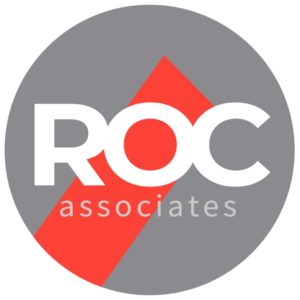Case Study: Un-branding the Tech Stack for a C-store Chain in Under 30 days
ROC recently had the opportunity to work with a retailer who had made the decision to move away from offering various major oil brands’ fuel at their stores to an un-branded fuel business model. They had the contractual, financial, and legal pieces of this process well in hand, but needed assistance in the daunting task of ensuring each store’s tech stack was transitioned to support the new business model and that credit transactions were seamlessly transitioned from the major oil credit platforms over to the new payment processor. Most importantly, they needed this switchover to happen in under 30 days. A very compressed timeline to say the least.
Due to the variety of existing store brands and the POS technologies in place, the task required a multitude of teams to work together in harmony to pull this off. POS systems required software updates, credit pinpads had to be replaced and loaded with the correct firmware for the variety of POS systems across the chain, fuel pumps needed firmware updated and encryption keys loaded, the managed network switch at each store had to be updated or upgraded to a new model in order to support the new configurations, and the pricebook team had to be involved in order to ensure communication between pricebook system and the store was fully functional after all of the store-side technology updates.
Identifying the correct stakeholders for each of these mission critical pieces of the puzzle, and bringing them in at the right time, were crucial for ensuring that this would be accomplished successfully. During the course of each store’s switch over, there were a minimum of six resources working in concert to do their part, all the while being conducted along the way by a launch room commander who oversaw the process to ensure each step was being done in the right sequence, that any roadblocks were cleared, and that escalations reached the appropriate parties.
Launch Room Team:
- Launch Room Commander
- Client Technology/Store Systems Lead
- Onsite Tech for in-store physical work (such as pinpad replacement or swapping out of other hardware)
- Onsite Tech for pump updates
- Remote support for managed network switch
- Remote support from POS reseller/support team
Lessons Learned:
There were many lessons learned over the course of this compressed timeframe conversion. Many of the identified issues could easily be mitigated by planning a bit further ahead:
- Make a plan for when things don’t go according to plan.
- With complex technology conversions like this, there are so many moving parts that inevitably you will run into snags along the way, so having backup resources can be a life saver to take over when the initial resource(s) have reached the point of exhaustion.
- Have contingency plans in place for all vendors and clear escalation points.
- Make sure all parties are aware of the likelihood of long workdays and are prepared to put in the time to see things through to completion.
- Conduct a comprehensive site survey, including confirmation of pump firmware versions. This is critical to make sure you know exactly what will need to be updated before the team arrives onsite.
- Include time for a pilot phase with a bake-in period so lessons can be learned, and adjustments can be made before moving on to additional locations. This will lead to faster, more efficient updates to the rest of the stores meaning they will be offline for a shorter period of time.
- Consider overnight installations to minimize disruption to operations.
- Maintain a complete list of all field technicians, with direct contact numbers, so they can be reached at all times.
- Define clear Statements of Work (SOW) with required end deliverables for field technicians.
- Keep communication lines open with regular bridge calls involving all parties.
- Implement a strict time limit for deciding when to cancel a conversion and roll the store back so that issues can be resolved before attempting the conversion again.
- Schedule all engineers well in advance to avoid last-minute scheduling issues.
In summary, this effort was a success despite the significant challenges from a compressed timeline; however, these challenges highlighted the need for improved planning, communication, and vendor management strategies moving forward. A “bake-in” period would have streamlined the remaining rollout, a site survey with firmware versions could have allowed for more planning of the appropriate field technicians, and a written playbook would have all allowed for more timely conversions. When new implementations run long, everyone gets exhausted, and more mistakes are likely to happen; proper planning and clearly defined limits would have eliminated errors and burnout. Nevertheless, this rollout was completed on time and the un-branding deadline was successfully achieved.
If you’re looking to make updates to your store’s technology, whether to un-brand or to address other business or operational goals, we offer a free one-hour evaluation where we can discuss your goals and the steps we can take to find and implement the right fit for your business.


Josh Carr
678-612-8168
